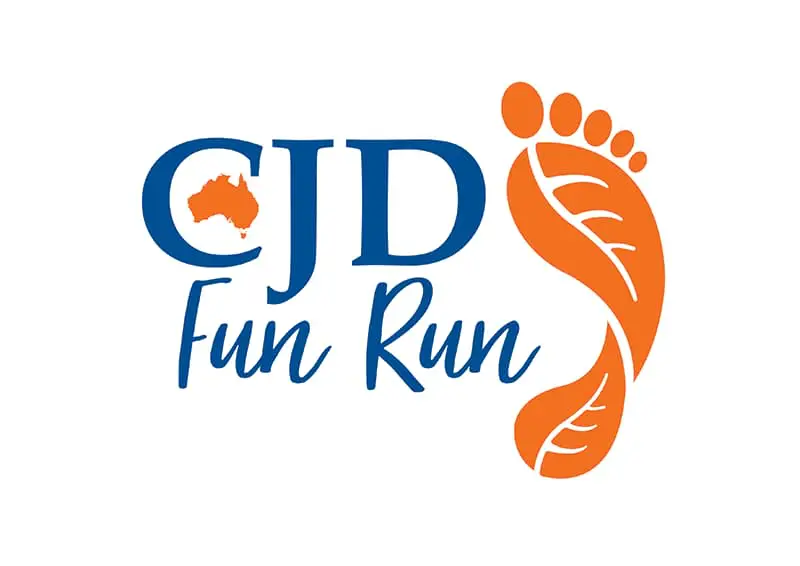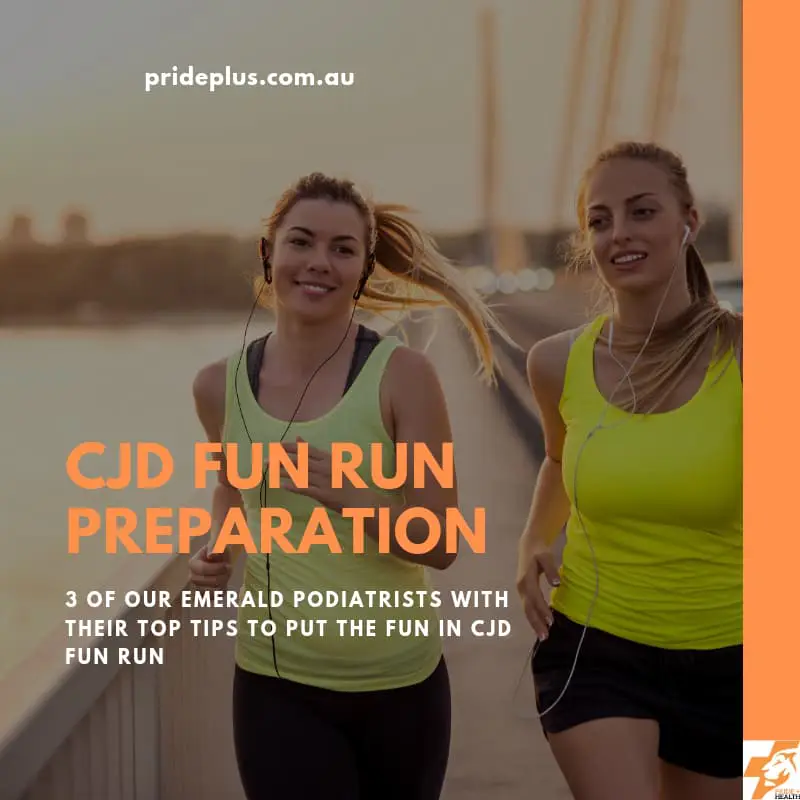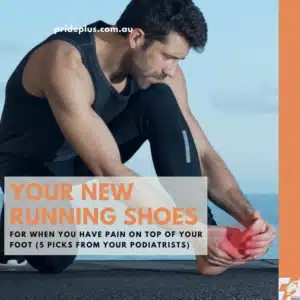Well done on signing up to compete and complete the CJD Fun Run. As podiatrists who love being in Emerald we know the route the fun run is taking has some great surface changes and the odd hill or two. We’re all really excited to support this great event.

So, let’s see if we can help a few people out using our expert knowledge of the foot and ankle, footwear and training to get you a PB.
Running well is all about preparation.
Being prepared with your training will have you at your peak, with heart, lungs, muscles and tendons all ready to take you up and down the hills.
Being prepared with your footwear will allow you to run at your peak efficiency, not asking too much or too little of any areas so you feel at your best. Footwear will also offer you the right levels of traction and protection from various hazards along the journey.
Being prepared means any previous injury or niggle is assessed and planned around by experts. For the foot, leg and ankle, that’s our Podiatry team.
To help you get prepared, we’ve asked 3 of our podiatrists in Emerald to give you their top three tips for preparing for the CJD Fun Run.
Ryan Cornwall

Trail runners v Runners
This is a common question we get asked! However, sometimes people aren’t aware that they could be using a shoe better accommodated to their exercise.
In Emerald, with the majority of surfaces for walking/running being unmade (grass, gravel, dirt) trail runners can be an excellent option.
If you run/walk mostly on made surfaces than your normal runners are ideal. But if you like to mix it up and get off the beaten track then a trail runner might be a great option for you.
A trail runner has essentially the same underlying structure as a running shoe. But have a few added benefits to help you on those unmade surfaces.
These include:
- Rubber base with more aggressive tread, this can help especially if it is a little slippery
- A tighter weave upper to protect you from sticks etc, but can also provide some extra water resistance
- Some models also have a rockplate/forefoot protection which can help deflect some impact if you land on a sharp rock
- Darker coloured upper, usually…… This can be beneficial as they don’t look as dirty as your normal brightly coloured runners
The advantages of a trail runner over a hiking boot or hiking shoe are the higher level of cushion and decreased weight. Unless you are hiking in some serious terrain, or with a heavy pack on your back, a trail runner can be a much more comfortable option than a heavy hiking boot/shoe.
Tanya Contis

A great, smooth and successful run starts with a strong foundation. Preparation is key!
Blisters
- Not if the shoe fits! Snug-fitting, supportive footwear that has proven itself before the big day. Don’t be swimming in them but don’t be suffocating in them, and be sure to give them a decent trial period before offering them the job! Check for any pressure points that could cause undue rubbing on any part of your foot
- Avoid wearing wet socks and wet shoes, as moisture + friction = blisters. Ew
- If you are prone to blistering and your hot spots are known to you, consider taping your feet prior to the event. We recommend using hypafix/breathable tape to decrease friction and take a blister pack with you for any touch-ups if needed
- Put a sock in it, then your foot in that. Socks are just as important as good footwear. Wearing the right socks can reduce blistering immensely. Good socks help prevent blisters by absorbing moisture and reducing friction on the surface of the feet. Some socks even have targeted padding around blister-prone areas. More on socks below…
Socks
Whether you are going for a stroll or embarking on a marathon, choosing the right pair of socks for your feet is crucial.
- Start with a fresh pair of socks on the day. Consider packing a spare pair of socks to change into in case the first pair become moist during an event.
- Like activewear in general, you want your socks to be breathable and quick-drying.
- Wear socks made using materials known for their moisture-wicking properties, like bamboo, merino wool, or specialist technical sock material blends with synthetic fibres that are designed to be antimicrobial (anti-smell), wick away moisture, quick-drying. You may wish to try silver-lined socks (real silver is embedded in the fabric) or wigwam socks.
- Some socks will offer extra padding in the areas of the foot that take the most impact when you’re running, reducing trauma due to impact. Some socks have anatomically-designed padding with one left foot and one right foot – no good if you have two left feet.
- Bless your cotton socks and leave them at home! Cotton socks hold onto moisture and take forever to dry once wet.
Hydration
Don’t forget to visit the bottle-o before your run!… to buy some H2O. Keeping hydrated is more than just about quenching your thirst. By keeping your fluids up you’re helping regulate body temperature, carrying food throughout the body, and lubricating joints.. Just to name a few. One of the main goals during an event is to avoid dehydration, as sweating is just one of the ways we lose fluid.
To work out how much water you need to consume start to ask yourself some questions
- Are you a heavy sweater?
- How long is the run?
- How do you feel post-run fatigue?
- Do you suffer from muscle cramps, during or post-run?
A few tips and tricks – however when it comes to water it’s very individual, trial ‘runs’ playing with the amount of fluid intake is recommended
- Keep hydrated the day before the event
- Pe-hydrate – 2 hrs before the event
- Don’t over-hydrate, there’s nothing worse than the sloshy feeling when going for a run!
- Maintenance – during the event
- Depending on the distance and the individual needs of the runner sip during the run (hydration belts, packs, bottles etc)
- Replacing fluids and electrolytes. When you sweat you lose electrolytes
- Listen to your body
Tim Mulholland

As an ageing runner come cyclist I want my running to be as efficient as possible. This means that I will target my preparation at the areas which will give me the best bang for my buck/time.
Exercise
- The soleus muscle which is deep in the calf produces over half(!!!) of your running power. How amazing is that? Out of all the muscles in our body, the soleus provides more power than the rest so for my training making sure my soleus is at peak capacity is paramount.
- To do this I do my calf raise training with a soft, flexed knee most days of the week when preparing.
- The best time to do this is now, as the benefits stack on top of each other, the more strength built now, the more you will have come race day.
Footwear
- Running shoes are not just for comfort and trendy looks. They can increase or decrease your running efficiency and change your injury risk profile. Getting the perfect fit is a start, but making sure you have the right combination of midsole stability, forefoot rocker and potentially even carbon fibre spring loading (yes, some running shoes are now spring-loaded!).
- It can be really difficult to know which shoes are best for your feet and different surfaces and different speeds. Best see expert podiatrists to have some guidance here.
- However – if it ain’t broke – don’t fix it! If your shoes are in good condition and you’re running well injury free – they sound like great shoes for you, stick with them.
Pre-Race Survey Run
- Prior to running in a different environment doing a training run along the course will help you immensely.
- Not only will you have the confidence on race day that you know where you’re going, but you will also pick up little landmarks of where to speed up, which hills to attack and which ones to slow down and respect.
- Also, you will learn for sure the surface of the track and making sure your shoes are ready for what presents. Just consider that the weather might change and if your training run is in the dry, you might not be so lucky for the race.
We can’t wait to see all the wonderful runners on October 27. If you need any assistance beforehand with your preparation or anything foot and ankle related be sure to book in online with our podiatry team in Emerald here.




